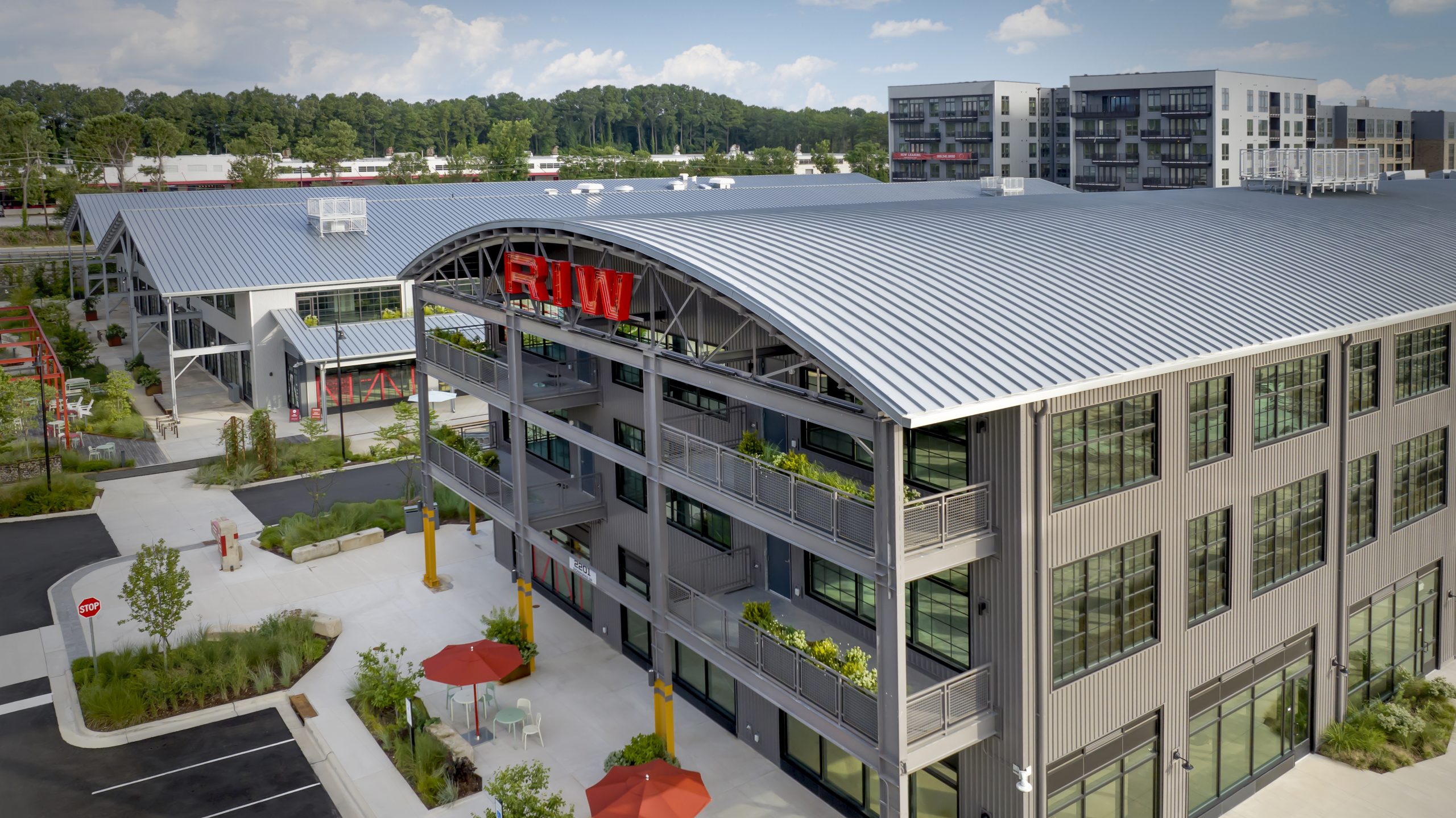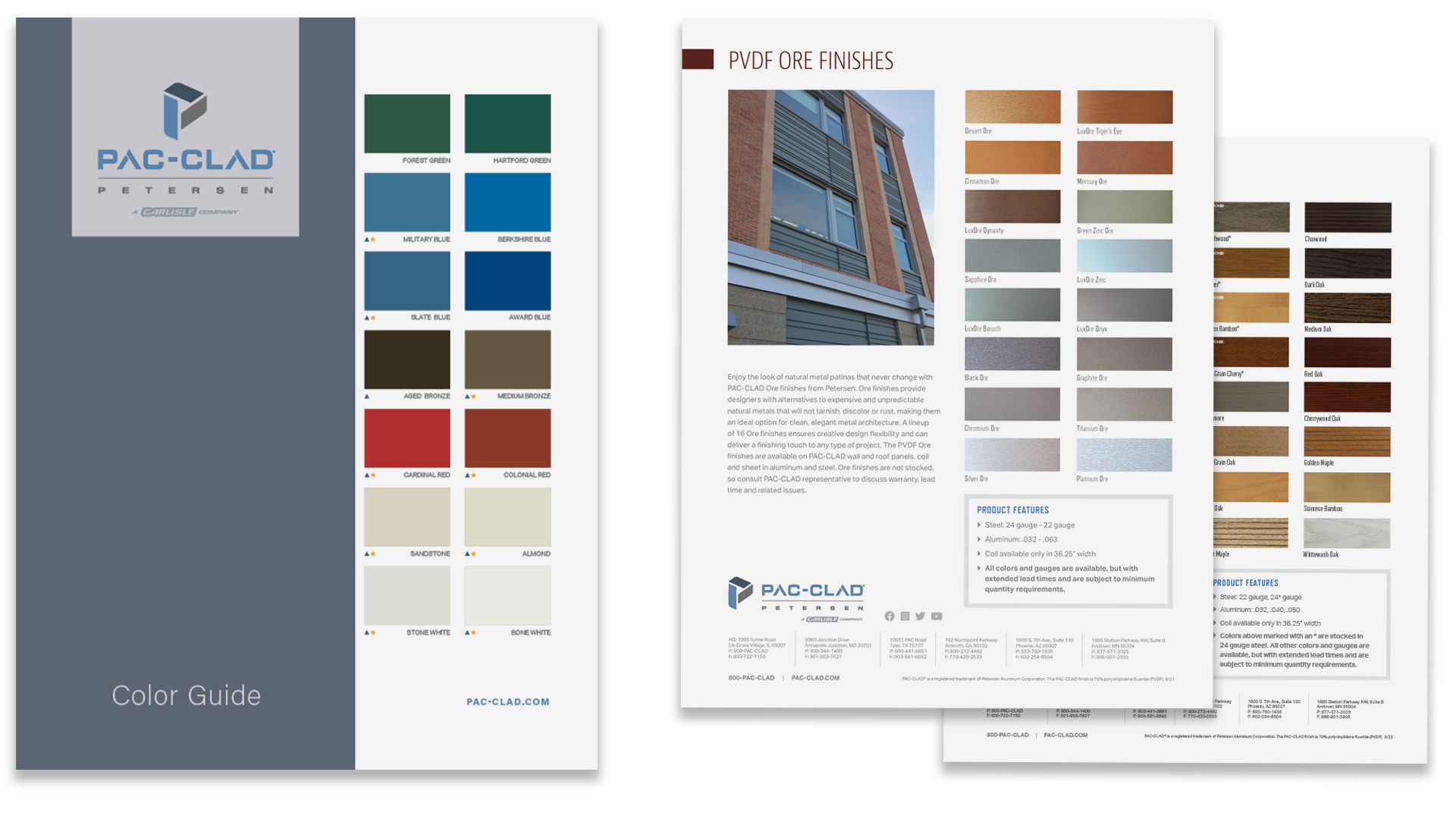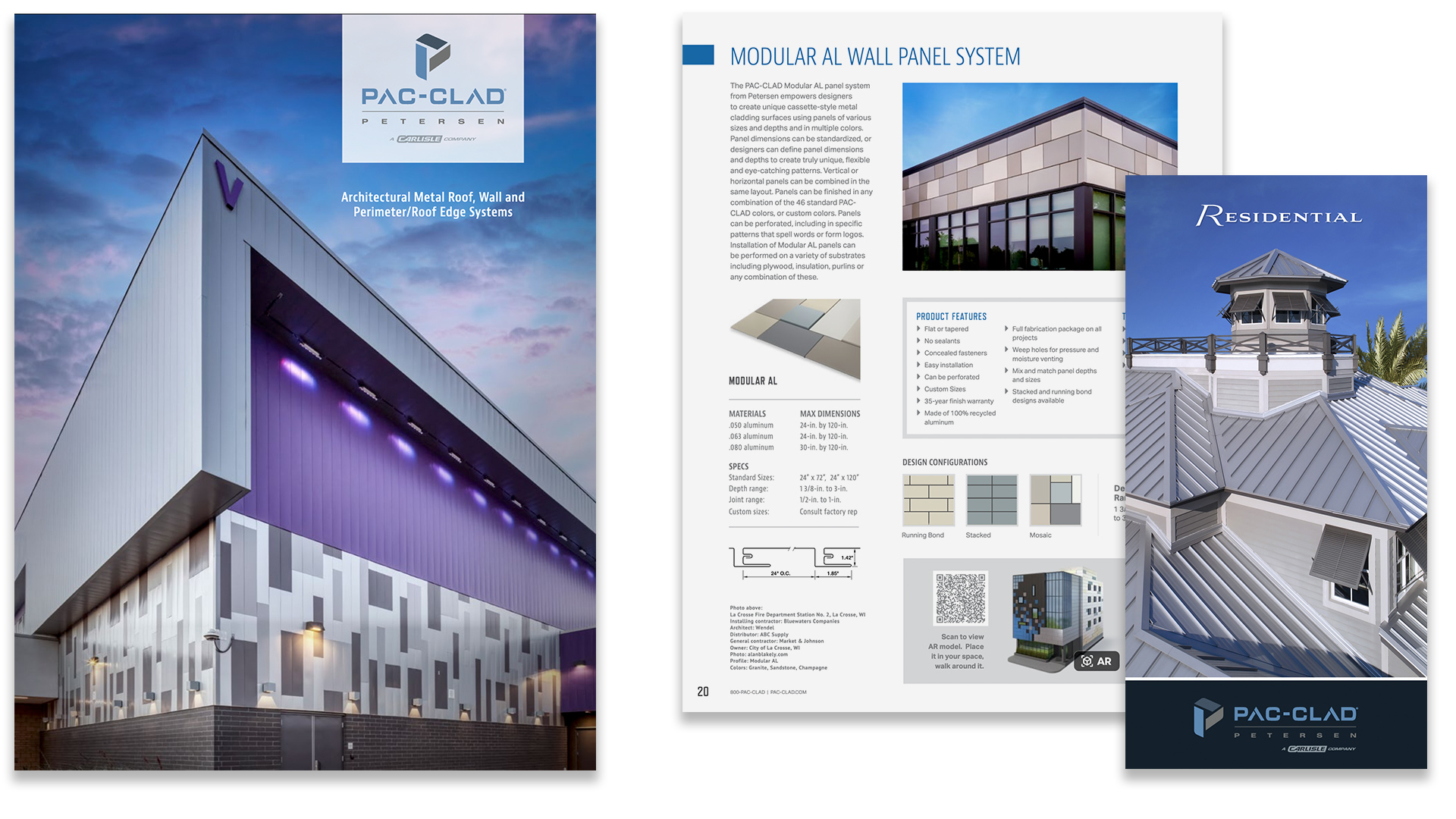Design files for metal roof, wall panels available on three major online platforms
Architects and designers now have multiple options for digitally locating and specifying Petersen Aluminum products during the design phase of any project. The manufacturer of metal roof and wall panels now has its library of BIM, CAD and installation drawings available on design platforms including Autodesk Seek, Arcat and Sweets.
Most recently, Petersen Aluminum has established a presence on the Autodesk Seek platform. Design files for 19 roof and wall products are available, including 37 BIM files, 300 CAD files and 400 installation details. These 3-D and 2-D files are available for users of Autodesk’s Revit design software, or for any designer wanting to download product specifications in BIM, CAD or PDF format at seek.autodesk.com/pac-clad. Petersen Aluminum also maintains libraries of its digital product files on Arcat.com, Sweets.com and its own web site at pac-clad.com.
“We know that to build familiarity with architects and designers we must have a presence in the spaces where they prefer to work. In 2015 these work spaces are digital, and they include sites like Seek, Arcat and Sweets,” said Mike Petersen, CEO. “By investing in our digital presence, we’re making it easier for architects to do their jobs, and we’re making it easier for those already familiar with our products to specify them. Those who are unfamiliar with Petersen Aluminum can now get a better look at our products, and give us a chance to prove our value.”
Building information modeling, or BIM, is a digital 3-D process through which product details such as specifications and installation drawings can be embedded in construction documents. Computer aided design, or CAD, is a similar but less robust 2-D digital design process. By using BIM, architects can understand how a construction design will look and perform in the built environment before it is physically built. An architect’s choice of product can be understood and predicted, allowing a design team to verify that the constructed environment will meet criteria established in the design scope.
Use of BIM in the architecture, engineering and construction industries remains on the rise. A survey of large AEC firms by Building Design & Construction magazine revealed that 79 percent reported at least some level of BIM-related revenue in 2014. AEC firms use BIM for many reasons, according to the 2015 BIM Experience Survey by constructionpronet.com. Preliminary results of the survey reveal that architects use BIM for the following reasons:
- Prefabrication efficiencies and increased field production
- Reduction of mistakes from lack of architect/engineer coordination
- Ensuring a good fit for projects with complex interfaces between components
- Improved workflow and constructability, and less field rework
- Improved coordination of trades
- Helps construction team to understand how specified products are installed and how they work
Autodesk Seek is a web service that allows architects, engineers and design students to search and find manufacturer-specific or generic building products and associated design content. This content could include 3-D models, 2-D drawings and specifications. Arcat.com is a building product information website that is free with no registration required. The Arcat BIM library has thousands of data-rich BIM objects and systems, all available in RFA, RVT, DWG and other formats. Sweets.com is a source for building product information in the construction industry, where AEC professionals find comprehensive content from manufacturers. Sweets’ parent company Dodge Data & Analytics provides data, analytics, news and intelligence serving the North American construction industry.










